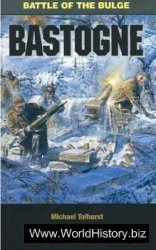By the end of 1936, the Treaty of Versailles had been virtually
scrapped, and Germany had erased much of the
stigma of defeat. Hitler, whose foreign policy successes
had earned him much public acclaim, was convinced that
neither the French nor the British would provide much
opposition to his plans and decided in 1938 to move
on Austria. By threatening Austria with invasion, Hitler
coerced the Austrian chancellor into putting Austrian
Nazis in charge of the government. The new government
promptly invited German troops to enter Austria and
assist in maintaining law and order. One day later, on
March 13, 1938, Hitler formally annexed Austria to
Germany.
The annexation of Austria, which had not raised objections
in other European capitals, put Germany in position
for Hitler’s next objective—the destruction of
Czechoslovakia. Although the latter was quite prepared
to defend itself and was well supported by pacts with
France and the Soviet Union, Hitler believed that its
allies would not use force to defend it against a German
attack.
He was right again. On September 15, 1938, Hitler demanded
the cession to Germany of the Sudetenland (an
area in western Czechoslovakia that was inhabited largely
by ethnic Germans) and expressed his willingness to risk
“world war” to achieve his objective. Instead of objecting,
the British, French, Germans, and Italians—at a hastily
arranged conference at Munich—reached an agreement
that essentially met all of Hitler’s demands. German
troops were allowed to occupy the Sudetenland as the
Czechs, abandoned by their Western allies, as well as by
the Soviet Union, stood by helplessly. The Munich Conference
was the high point of Western appeasement of
Hitler. British Prime Minister Neville Chamberlain returned
to England from Munich boasting that the agreement
meant “peace in our time.” Hitler had promised
Chamberlain that he had made his last demand (see the
box on p. 120).
In fact, Munich confirmed Hitler’s perception that the
Western democracies were weak and would not fight. Increasingly,
he was convinced of his own infallibility and
had by no means been satisfied at Munich. In March
1939, Hitler occupied the Czech lands (Bohemia and
Moravia), and the Slovaks, with his encouragement, declared
their independence of the Czechs and set up the
German puppet state of Slovakia. On the evening of
March 15, 1939, Hitler triumphantly declared in Prague
that he would be known as the greatest German of
them all.
At last, the Western states reacted vigorously to the
Nazi threat. Hitler’s naked aggression had made it clear
that his promises were utterly worthless. When he began
to demand the return to Germany of Danzig (which had
been made a free city by the Treaty of Versailles to serve
as a seaport for Poland), Britain recognized the danger
and offered to protect Poland in the event of war. Both
France and Britain realized that they needed Soviet help
to contain Nazi aggression and began political and military
negotiations with Stalin. Their distrust of Soviet
communism, however, made an alliance unlikely.
Meanwhile, Hitler pressed on in the belief that Britain
and France would not go to war over Poland. To preclude
an alliance between the western European states and
the Soviet Union, which would create the danger of a
two-front war, Hitler, ever the opportunist, approached
Stalin, who had given up hope of any alliance with Britain
and France. The announcement on August 23, 1939,
of the Nazi-Soviet Nonaggression Pact shocked the
world. The treaty with the Soviet Union gave Hitler the
freedom he sought, and on September 1, German forces
invaded Poland. Two days later, Britain and France declared
war on Germany. Europe was again at war.
|
|
||||||||
|
Www.WorldHistory.Biz
Sundries
 Contact Contact
|
 
10-08-2015, 17:02
DECISION AT MUNICH
  |
|||||||
 |
 |
 |
 |
|||||
|
||||||||

 World History
World History





